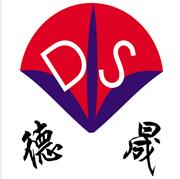- Enzyme(14)
- Carbomer(2)
- Blood collection tube additives(12)
- trinder's reagent(9)
- Biological buffer(21)
- Chemiluminescence reagent(9)
| Hubei xindesheng Material Technology Co., Ltd | |
|---|---|
| Country: | China |
| Tel: | +8618971041571 |
| E-mail: | zjing9632@gmail.com |
| QQ: | 2198447049 |
| Skype: | Chat Now! |
The 10 best biological buffers for chromatography
Release time: 2022-04-08
The 10 best biological buffers for chromatography
Chromatography is often used for the separation and purification of proteins in laboratory.In this process, the PH variations is related to the separation capability of the system. If the PH of solvent is near to pKa, for example, small changes in PH can strongly affect retention, and consequently the separation results.A buffer should be added to the system in order to control the mobile phase PH, Since the retention of ionizable compounds is especially sensitive to the PH variable.
According to relevant literature in chromatography,we found that although the Tris and MES are often the best choices for this technique, other buffers have also been used in cation exchange chromatography, anion exchange chromatography, high-performance liquid chromatography (HPLC) and other similar techniques.Below are the 10 best buffers for your reference.
1) BIS-TRIS buffer
Suitable PH range: 5.8 - 7.2
PKA (25°C): 6.46
Molecular weight: 209.2g/mol
Used as a buffer during anion exchange chromatography (Concerns: several components in a chromatographic system may be competing for metal binding with this buffer)
2) BES buffer
Suitable PH range: 6.4 - 7.8
PKA (25°C): 7.09
Molecular weight: 213.2g/mol
Used as a binding buffer and eluent in cation exchange chromatography / as a buffer in gel filtration chromatography
3) Bicine buffer
Suitable PH range: 7.6 - 9.0
PKA (25°C): 8.26
Molecular weight: 163.2 g/mol
Used as a mobile phase buffer and eluent in cation exchange chromatography
4) CAPS buffer
Suitable PH range: 9.7 - 11.1
PKA (25°C): 10.40
Molecular weight: 221.32g/mol
Used as a binding buffer and eluent in cation exchange chromatography
Read more about Hopax CAPS
5) HEPES buffer
Suitable PH range: 6.8 - 8.2
PKA (25°C): 7.48
Molecular weight: 238.3g/mol
Used as a binding buffer and eluent in cation exchange chromatography in a two-stage reverse dialysis method for in vitro release testing
6) MES buffer
Suitable PH range: 5.5 - 6.7
PKA (25°C): 6.10
Molecular weight: 195.2g/mol
Used as a buffer in capillary electrochromatography,gel-filtration chromatography,phosphocellulose column chromatography,hydrophobic interaction chromatography,and cation exchange chromatography
7) MOPS buffer
Suitable PH range: 6.5 - 7.9
PKA (25°C): 7.14
Molecular weight: 209.3g/mol
Used as a running buffer for protein purification in chromatography
8) PIPES buffer
Suitable PH range: 6.1 - 7.5
PKA (25°C): 6.76
Molecular weight: 302.37g/mol
Used as a buffer in cation exchange chromatography,it should be used in lower concentrations due to its large ionic strength and dependence of concentration on pKa.And a buffer in phosphocellulose chromatography to purify microtubule proteins
9) TAPS buffer
Suitable PH range: 7.7 - 9.1
PKA (25°C): 8.40
Molecular weight: 243.28g/mol
Used as a buffer in planar chromatography to separate dyes,and in ion exchange chromatography for enzyme purification14
10) Tris buffer
Suitable PH range: 7.5 - 9.0
PKA (25°C): 8.06
Molecular weight: 121.14g/mol
Used as a buffer and eluent in anion exchange chromatography,and in capillary electrochromatography due to its low ionic mobility
Hubei New Desheng Material Technology Co.,Ltd is specialized in producing biological Buffers over years.We’ve developed a series of biological buffers including TRIS, HEPES, TAPS, MOPS, CAPS, BICINE, EPPS, PIPES and so on. It’s not only have a large market share in the domestic market, but also have been sold to dozens of countries around the world. We’ve established long-term and stable cooperation with many large-scale biomedical technology enterprises.
For more information, pls contact visit our website.http://www.whdsbio.cn/product/13.html

